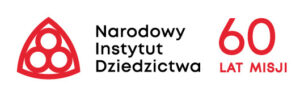Contact Us
Are you interested in cooperation? Give us a call or write to us – we will answer any questions.

In the case of historical objects, conservation inventory requires utmost precision to preserve the monuments in digital or paper form. Creating a recorded model facilitates the reconstruction or renovation of an old building. Research on monuments also determines their age and architectural condition, contributing to the understanding and explanation of the history of the studied structure.
When creating models, every element, shape, and unique decoration should be reproduced with meticulous care. Over time, buildings can undergo changes and exhibit defects, cracks, or other damages. Accurately capturing the wealth of patterns and details is crucial for transferring them in perfect proportion to preserve the scale and proportion of the original object.


Whether it involves reviving history or determining the value of contemporary objects, architectural measurements are evolving through the use of cutting-edge scanning technologies, 3D modeling, and computer graphics.
During the inventory of historical objects, ArchiTube specialists create models from recorded scans and meticulously reproduce digital copies of real objects by applying textures, colors, and refining details. In addition to monuments, 3D modeling of non-historical buildings adjacent to historic objects helps owners and investors determine the overall value of the property during its acquisition.
Objects distinguished by their scale or size in architectural inventory include:







Risk Mitigation – Having a digital copy of a culturally priceless object can facilitate the replication and reconstruction of the monument in the future, even in the event of potential damage.
The latest example demonstrating the application of conservation inventory can be found in the case of the Notre-Dame Cathedral in Paris, which was devastated by fire. Several years before the tragedy, Andrew Tallon, a renowned American art historian, conducted measurements of the cathedral as part of his research. His work greatly contributed to the ongoing restoration efforts and will likely be utilized in future renovations.
Interestingly, this is not the only representation of this French landmark. For the purposes of the popular video game Assassin’s Creed Unity, a 3D model of 18th-century Paris was created over a span of two years, with special attention given to the cathedral.
Safety – Laser scanning method minimizes direct contact, which is crucial when working with delicate and fragile heritage objects. This allows the entire process to be carried out without exposing the inventoried object to any damage.
Time – By utilizing point cloud-based modeling, the workflow progresses much more efficiently, and the complete project is finalized up to 30% faster.
Accuracy – Precisely capturing the scale and intricate details is a vital component of a well-executed inventory. With the scanners described below, the dimensional accuracy reaches 5mm.










With its stability, high resistance to external conditions, precision, and extensive range, it excels in geodetic and engineering work in industries such as mining, steel mills, etc., as well as in measurements of monuments and other architectural structures.
A compact and fast scanner that is perfect for work in busy and crowded places (stores, offices) and special measurements in hard-to-reach, confined spaces (e.g., tunnels, ceiling gaps).
Universal in its compactness and speed, it performs well on most objects.
This program is primarily used for Building Information Modeling (BIM), enabling the planning, creation, and management of architecture and infrastructure.
Popular CAD software that allows for the preparation of 2D documentation. The program allows for the precise outlining of scanned object models.
01.
During the initial visit, preliminary measurements of the object are taken. Together with the investor/conservator, the scope of work and all necessary details are determined to estimate the cost and timeframe of the service.
02.
After the agreements are made, the actual measurements are conducted. They involve a wide range of calculation methods using the mentioned equipment. Starting with terrestrial scans, an external map of the structure and its surroundings is created, followed by the interior of the building.
03.
After the measurements, the point cloud data can be supplemented using a drone with a scanner, which is particularly useful for multi-storey historical buildings. Photogrammetric calculations are performed, and depending on the needs, underground installations can also be detected.
04.
In the next stage, the acquired information is processed using dedicated software. Skilled operators play a crucial role in properly aligning the point cloud and creating an accurate 3D model based on it.
05.
The result of the conducted inventory is called an “operat pomiarowy” (measurement report). It typically consists of two parts:
A.
This includes visualization of the object, horizontal and vertical sections, as well as images of the structure.
B.
It specifies the precise administrative and geographical location, the number of building floors with their respective areas, and the history of the monument’s creation.
06.
The measurement report is accompanied by technical documentation in both printed and editable versions. The editable part comprises DWG files, BIM models, and point clouds, allowing for reviewing and dimensioning all elements without leaving the office.
07.
Before handing over the technical documentation to the client, each study undergoes rigorous verification. After an internal evaluation, any necessary revisions, additional work, and comments are discussed with the client. The presentation of the final results takes from one to several working days, depending on the complexity of the project involving multiple buildings.
Are you interested in cooperation? Give us a call or write to us – we will answer any questions.
